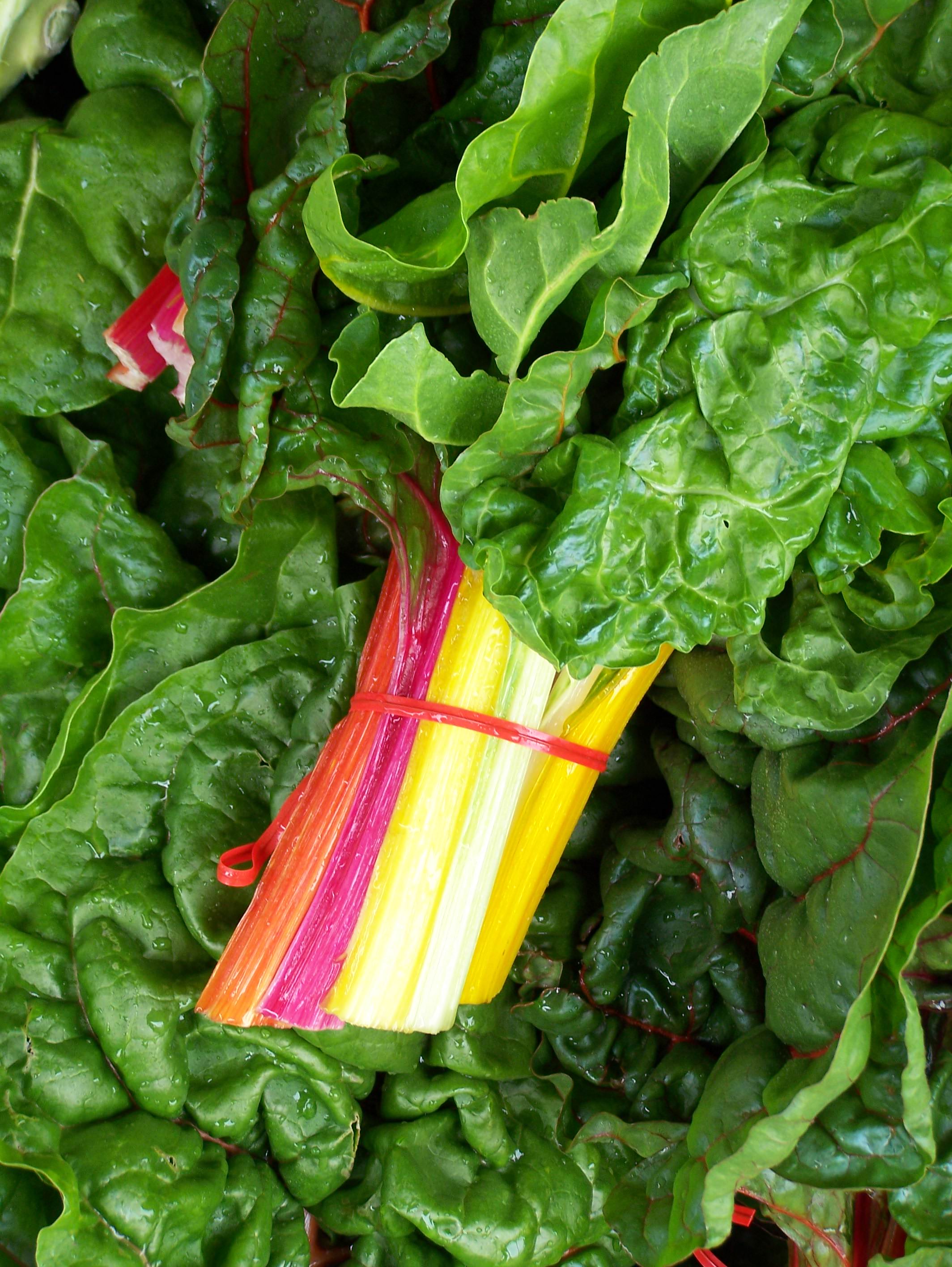
For an updated list of CSAs for 2017, please see our Local Food Guide: Community Supported Agriculture (CSA) Farms here.
As I sit here writing, appropriately in my kitchen, I look out into my backyard and see the buds on the rhododendron. It’s sunny – for a change – and I’m seeing lots of green. I’m quite amazed, in fact, at the amount of green – chartreuse, really – that I see on my neighbors’ lawns across the street, only two weeks after so much snow.
What is disappearing, however, are the vegetables I froze last summer and fall. As I reached into the freezer last night for some tomatoes to make sauce, I did a quick count, and sighed. How long would it be before I could taste this year’s crop of tomatoes?
 One of my goals this growing season is to buy one of those vacuum-pack machines because, well, we joined a local CSA last year for the first time. What’s a CSA, you ask? Something quite special.
One of my goals this growing season is to buy one of those vacuum-pack machines because, well, we joined a local CSA last year for the first time. What’s a CSA, you ask? Something quite special.
What is it? CSA stands for “Community Supported Agriculture.” In short, it’s a way for consumers to buy into an agricultural enterprise, receive fresh, natural food seasonally and support our local food system.
Most CSAs are farms, and involve vegetables herbs, fruits and flowers, although other types – meat, fish – are popping up all the time, here and in other parts of the country. We are fortunate to have a healthy crop of CSAs here in Bucks County (and nearby) too. All told, about seven fourteen, including one poultry farm CSA. And most use organic, or nearly organic, methods of farming.
How does it work? I’ll use a CSA farm as an example, since that’s most common. You buy a “share” per season (usually late May through mid-November), which entitles your household to a weekly portion of produce, grown on that farm. Many CSAs offer half-shares, too, which is what Mark and I have since we are only two adults. We pick up every other week. Some people go in with other family members or friends and buy a share together.
Most CSAs also ask that each household volunteer a certain number of hours per season but it’s quite reasonable. Our CSA, Anchor Run Farm in Wrightstown, asks full share members to put in 8 hours over the course of the season, half-share members only 4 hours. Tasks vary from helping with the garlic harvest (an” all hands on deck” type event) to weeding and other necessary farming maintenance.
At Anchor Run, we pick up every other week (because we are half-share members) which involves going to the farm on a Monday or Thursday, filling our bags with the vegetables picked that week, and doing some “pick-your-own” of other vegetables or fruits. The farmers tell us how much we can pick, trying to make sure there will be enough to go around for all members. Some CSAs have you pick all your own vegetables.
Many CSAs also offer other local products from partner farms, like eggs, poultry, beef, bacon, mushrooms, preserves, etc. that you can buy at the same time you pick up your share. And many also offer special educational programs for little family members, community events and cooking demos.
Why do it? Ah. When I wrote out the check last year, I was a bit taken aback. “For vegetables?” I thought, “This better be worth it.” And it was. Everything they say about eating FRESH vegetables is true: they taste so much better, they last so much longer, and the variety is delightful. Vegetables we had given up on – like radishes – were happily welcomed back into our home. We made new friends, like garlic scapes (the top green part of growing garlic, available for a brief time in the spring).
Another aspect of belonging to a CSA is that you truly cook seasonally – you have to; the refrigerator is bursting. This is what most intimidated me going in. Would I know what to do with it all? Would too much end up in the compost heap? But instead I found it exciting and fun. [See the excellent article, “Diary of a CSA Member,” by Anchor Run member Tina Bashline below. She describes it perfectly.]
And we are not vegetarians (if you are regular readers of Bucks County Taste you know this!). Nor are we big salad eaters, or even, particularly gung-ho about vegetables. My point being, if WE could do it, and be converted, well, then, anyone could.
Another interesting side effect I noticed was that I went to the supermarket much less last summer. I actually ended up spending less money on food overall because of our CSA membership (my willpower in Wegmans being rather weak).
Who runs CSAs and how can I find one near me? We have fourteen CSAs in Bucks County (and a few more nearby) that offer produce and one that offers poultry and eggs. They range in size from 25 members to over 200. Some have been going for years, some are just getting started. So if one of the established ones is full up this year, try another, newer one. You may be getting in on the ground floor, so to speak.
The CSAs are run by young couples, schooled in farming, like Dana Hunting and Derek McGeehan at Anchor Run, or Tom Murtha and his wife, Tricia Borneman, at Blooming Glen. Or farmers who come from multi-generational farms like Susan Snipes-Wells at Snipes Farm in Morrisville, or Sandy Guzikowski, who is a third generation farmer on her family’s land in Yardley. If you want to support local agriculture and open space in Bucks County, you’d be hard pressed to find a more delicious and healthy way to do it.
NOW is the time to sign up for CSAs. Here’s a list of CSAs in Bucks County. Please contact them for more details. Share prices vary, so find one that works for you and your household.
Click here for a current listing of all CSAs in Bucks County.
The following article was posted last year on the Anchor Run Farm Web site. It made me chuckle. And I think it does a good job describing the life of a CSA household. Thanks, Tina.
Diary of a CSA Member
by Tina Bashline (with permission)
 In the autumn of 2004, when my family first heard of the newly created Anchor Run Farm CSA, we had no idea what a CSA was. And this fall, at the end of the 2009 growing season, I know that we are STILL learning how to make the most of this amazing relationship between farmers and food-conscious community. Just the other night, my husband, kids, and I were reviewing some of our early CSA experiences and how we get better and better at this every year. For example…
In the autumn of 2004, when my family first heard of the newly created Anchor Run Farm CSA, we had no idea what a CSA was. And this fall, at the end of the 2009 growing season, I know that we are STILL learning how to make the most of this amazing relationship between farmers and food-conscious community. Just the other night, my husband, kids, and I were reviewing some of our early CSA experiences and how we get better and better at this every year. For example…
Year One: The year we had no idea what we had really signed up for. We thought we were supporting local farmers and open space in our township. So, who are all these vegetarians talking about organics? Greens? So many greens? What do you do with them? How do you even get them into the refrigerator? I’ll admit it: that first year saw some wasted greens that ended up as compost. We were sad about it, but vowed we would do better next year.
The Next Year: Guess what? GREENS again – that first crop of the season, of course! This year, we knew the solution. Use the greens first – sometimes the same day we brought them home. We searched for recipes and found an amazing number of both exotic and fast/easy recipes. And our two stand-bys were always “add them to soup” or “cook them in olive oil with garlic.”
Year Three: Are we slow learners or what? This was the first year we really got into the whole concept of “seasonal eating.” In other words, those recipes that want you to combine spring peas with summer squash are NOT a reality when you are eating fresh from the farm. If we were going to avoid grocery-store vegetables, we were going to eat only what was in the pick-up that week. That was the hardest lesson: EAT WHAT YOU HAVE; don’t pine for what’s not available.
I think year three was also the year that we finally started getting creative with herbs too. We would bring home clippings of sage or basil and just do an internet search… maybe “recipe, sage, squash” and see what would come up. Or, we would get crazy and make something up.
That was also the first time my husband tried making preserves… basil jelly and a garlic/rosemary preserve. Those beautiful little jars were our Christmas gifts to our relatives that year.
Year Four: Now, we are getting picky. WHAT do you mean – ONLY ONE CELERIAC??? (Never mind that we didn’t even know what it was Year One.) How can we make soup with just one? This was the year that we learned to “hang out” near the Share Box in the pick-up room. When the newbie members were saying “Yuck–celeriac,” we could pounce on the rejected roots and take them home where they would be loved. (And conversely, we could also toss our unwanted lettuce in that same box, knowing that “people too busy to cook” can NEVER get enough lettuce and would be happy to take “our” lettuce home with them.)
This Year: Still learning. Cucumbers. TOO. MANY. CUCUMBERS. You can’t freeze them and I can take only so many salads and soups made of them. But taking a hint from previous gluts, we figured it out once again. At Anchor Run, we loved the year of “too many beets.” We made sauce all summer long in the “summer of too many tomatoes.” We actually mailed potatoes to my mother during the amazing “year of the potato.”
So, for the year of the cuke, we learned to make pickles. It was scary the first time, but my daughters love dill pickles. And once we realized how easy canning was, we were pretty sad when the cucumber season finally came to an end. (I am very sad to report that EVERY JAR we canned has been eaten already too!)
Next Year: What will the lessons be? It’s hard to tell at this point. But, I do know that we’ll be thinking more about the farm as a working community. Crops are harvested and they are distributed to be shared among us. We will continue to “share” most of our lettuce with others. We will be watching the Share Box for celeriac and scallions and vegetables that others don’t care for as much as we do.
And most of all, we’ll be looking forward to sharing good weather and warm conversations with our farmers and fellow members throughout the season. See you then.
Another interesting article on CSAs is at www.Rodale.com,
Save Money, Lower Your Blood Pressure, with a CSA Subscription
Look for Bucks County Taste on Facebook and Twitter!

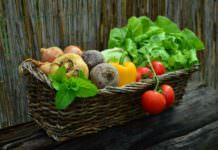


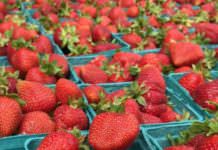
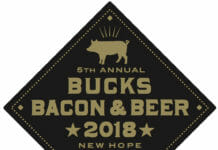
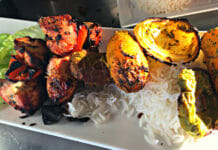

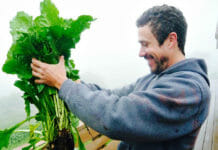
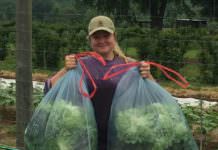
![What we’re reading [Oct 16 2017]](https://www.buckscountytaste.com/wp-content/uploads/2017/10/coffee_macbook_reading_pexels-photo-414630-218x150.jpeg)
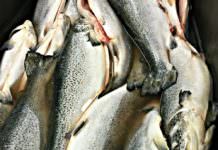
Brilliant idea.
I presume you can also go and look on the farm to see your own (or earmarked) produce grow!
Not so good for your local supermarkets though!
Nice article, and supporting CSAs is important. I would have chosen a different graphic than the second one in this article to illustrate the message of CSAs better than pineapples, lemons and bananas that don’t grow in our area.
You are absolutely right, CS. I try to catch this stuff, but sometimes I’m in a hurry to get the post up and I let it slide. I’ll be more conscientious in the future!
[…] Not so! Open Acres, Bucks County’s newest CSA (community-supported-agriculture) farm, still has shares available. This is your chance to get local, naturally grown, fresh produce every week during the growing season. You can still become a member of this small farm in Upper Black Eddy commited to sustainable agriculture and all natural farming. (To learn more about CSAs see our previous post.) […]
[…] to join a CSA farm next year, NOW is a good time to get on their waiting lists for 2011. I wrote a post last spring all about CSAs, and I’ll excerpt some of it here. But go to the post for a full […]
[…] this year. It’s not too late to sign up for a share. See our post for contact information: CSAs: It’s like having your own farm. Don’t wait – shares fill up quickly this time of […]
[…] I’ve been hearing from some CSA farms (Community Supported Agriculture) that they still have shares available for the upcoming season. To learn more about how most CSAs work, read our previous post. […]
[…] I’d like to introduce you to two local food blogs – one from the community-supported-agriculture (CSA) farm, Blooming Glen Farm, and the other from the popular Doylestown bakery, Crossroads Bake […]
Solly Brother’s Farm in Ivyland sells shares for a CSA all year, and you can either get a full share or a half share.